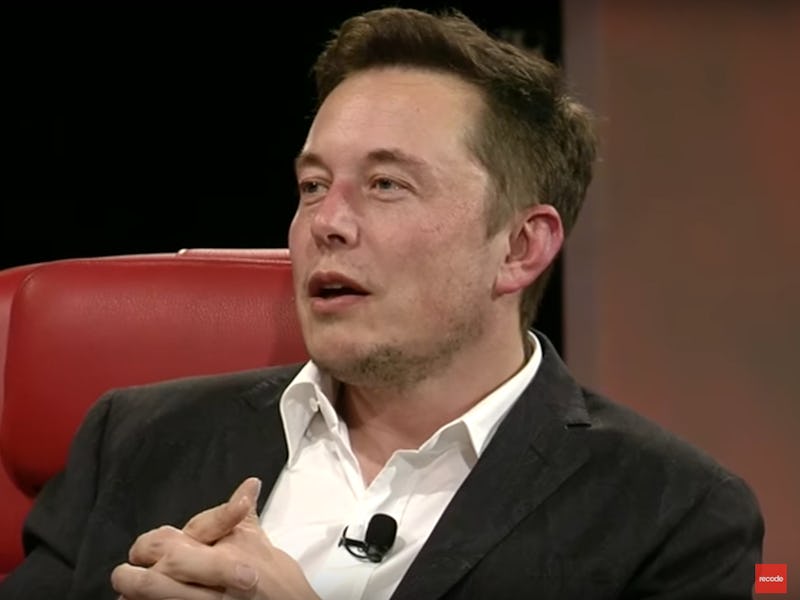Elon Musk Thinks A.I. Will Take Over, but "Neural Lace" Will Save Humanity
Humanity must "Achieve symbiosis with machines," Musk says.

Elon Musk has been floating some very forward facing, futurist tech ideas lately such as how we’ll make government on Mars, why we’re all living in a simulation like The Matrix, and how he plans to launch a SpaceX rocket at the unprecedented rate of once every two weeks. But his thoughts on something called “neural lace” have to be the most far out.
“Creating a neural lace is the thing that really matters for humanity to achieve symbiosis with machines,” Musk tweeted late Friday night, which followed statements made earlier in the week on the topic at Recode’s Code Conference in Rancho Palos Verdes, California.
So what is Musk saying when he talks about a neural lace? In the most basic sense, it’s a mesh of electronic fibers that you would place on your head to improve human performance. Think of it like a kitchen cap for your brain, but instead of protecting food from stray hairs, it improves your cognitive abilities.
This soft, conductive polymer mesh can be rolled up and injected into the brains of mice.
But, perhaps more interesting than explaining what neural lace actually does, is comprehending why Musk thinks it’s so vital.
It all ties back to his theories about A.I. and how he believes one day machines will become smarter than humans. At a benign level, he says, machines could come to think of humans as house pets, or simply come to destroy all of humanity, as numerous movies have depicted.
Actor Matt Damon, during his commencement speech at MIT this week, suggested he’s concerned about similar problems with A.I. Musk doesn’t seem too thrilled with being thought of as a house cat, so he has a way to beat A.I.
“The solution that seems the best one is to have an A.I. layer (on your brain), that can work well and symbiotically with you,” Musk said during a live interview at Code Conference. “Just as your cortex works symbiotically with your limbic system, your third digital layer could work symbiotically with you.”
By using neural lace, Musk hopes human cognitive abilities can be improved to best the advancement of artificial intelligence or at least match it.
Walt Mossberg, co-producer of the conference, suggested that implementing neural lace seemed like a high risk procedure or surgery. But Musk pushed back, claiming that, while surgery is certainly an option, humans may be able to connect the neural lace via the bloodstream.
“Neurons are already heavy users of energy, so they need high blood flow,” Musk said during the interview. “So you automatically through your veins and arteries have a road network to your neurons.”
He added that it may have to be injected into the jugular, which doesn’t sound all that comforting, but at least it’s not chopping open your skull, he said.
Researchers illustrate how neural mesh was injected into mice.
There’s already been some research and heavy investment into this idea. A year ago a group of chemists and engineers published a paper in Nature Nanotechnology that showed they could inject neural lace via a syringe into mice. The rodents survived the procedure and researchers used the implants to monitor brain activity.
This future is a long way away. After all, Siri still isn’t all that good at understanding what we’re asking. But Musk has always been one to prepare for the future.